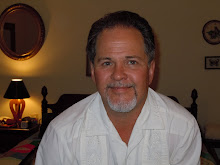Wednesday, March 17, 2010
The Z Boys Surf/Skate Style
The Z Boys Surf/Skate style employs a rather sophisticated set of footwork to control the skateboard. Instead of placing one foot over each truck and using the ankles to turn the board by tilting the direction you are turning, the Z Boy method utilizes the “carve.” It is important to realize that BOTH the heels and the balls of the feet are used to control the board. They can be used discretely with independence between the two feet or in tandem. Any combination of front foot/back foot toe/heel can be used. Stacy Peralta originated (or at least in any mainstream sense) the concept of “pumping” the skateboard to achieve speed. He used the back foot tilted at an angle and “rocked” the foot from ball to heal on the very tail of the board to get it to “pump.” The front foot also was pointed mostly forward, not laterally across the board, with the ball of the front foot carrying most of the weight. The combination of a small ball pivot placed nearly center on the board (with possible the heal hanging over the back rail, if your foot was large) controlling the turning of the board from the front, in cooperation with the “rocking” of the back foot from toe to heal (i.e. the toe pressing down in the inside rail in a turn and the heal pressing down the outside rail) accomplished a very sharp carving motion enabling the Z Boys to eventually carve a pool. The technique was based upon Larry Bertleman’s surfing style which the Z Boys saw for the first time in the Hal Jepson film Super Session. Larry did not want to follow the traditional, long, loping lines of previous surfers instead opting to “carve” figure eight patterns much more sharply with a low center of gravity. Surfing low allowed the execution of sharper turns high on the incline of the wave and also allowed riding inside the closing tube of the encroaching wave. The feet position of Bertleman could be called one of a number of different surf stances. The feet are placed at almost a 90 degree angle with each other and with a 45 degree angle to the rails of the board. This foot placement offered optimum control when carving the board. This symmetrical foot placement
